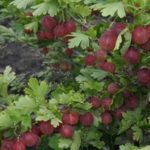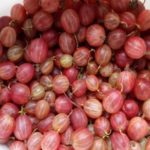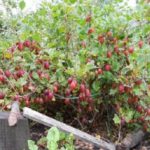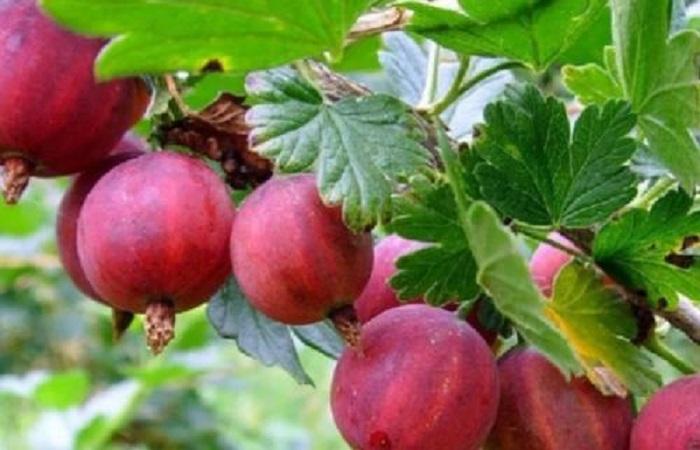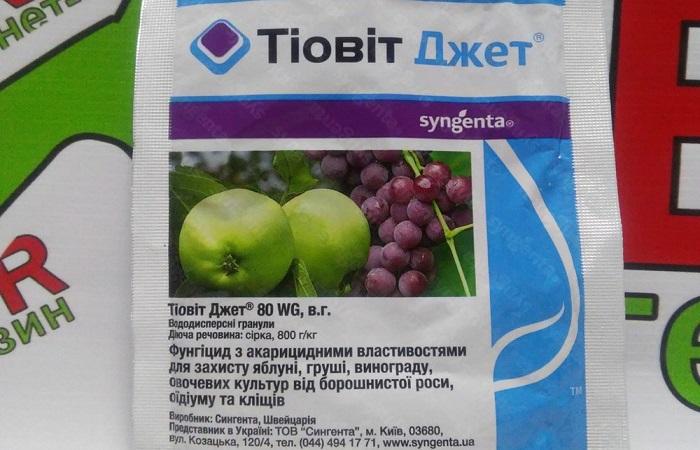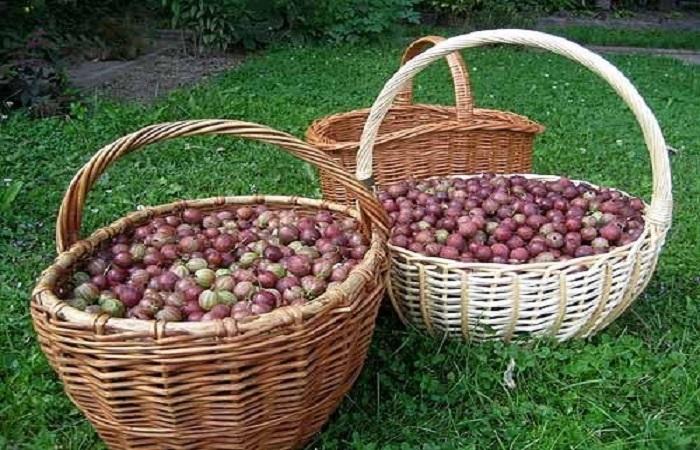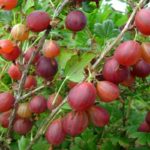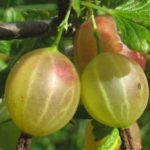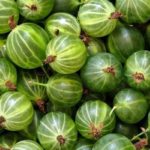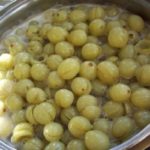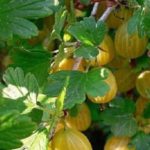Ural pink is a gooseberry variety that belongs to the group of mid-season crops. It got its name due to the characteristic color of the fruit. It is characterized by rich yield and moderate resistance to phytopathologies. Due to the high quality of the berries, the shrub is suitable for growing not only in home gardening, but also on an industrial scale.
How did the Ural pink gooseberry appear?
The variety was bred around 1971 by breeder V. S. Ilyin.However, work on obtaining new varieties, according to earlier records, began in 1934-1950. Then another Soviet scientist, A.P. Gubenko, worked in this direction. Together with Ural pink, other types of gooseberries were obtained, which are also popular today.
Fact! In 2004, the Ural pink gooseberry variety was included in the State Register of Breeding Achievements for the West Siberian region.
Description and characteristics of the variety
The Ural pink gooseberry variety is mid-late, high-yielding. The bushes are vigorous, medium spreading, and the branches are dense. Young shoots are of medium thickness, straight, and green in color. Topped with long sharp spines, which are located mainly in the center.
The leaves are medium in size, dark green in color. The buds are solitary and also of medium size. The petiole trace is rounded. The weight of the berries reaches 3.7-6.4 grams. They have a round-oval shape and a bright pink color with a matte coating.
The average yield of the variety is 1.8 tons per 1 hectare of land. The maximum harvest amount reaches 32 tons per hectare.
Advantages and disadvantages
The main advantages of the Ural pink gooseberry variety are:
- frost resistance;
- high productivity;
- ease of cultivation in the garden;
- ease of care;
- strong immune system;
- high taste of berries;
- resistance to many phytopathologies.
Gardeners call the only serious drawback of the crop the presence of sharp thorns on gooseberry shoots.
Growing and care
To grow a plant in your summer cottage, you need:
- Choose the right place to plant bushes.Ural pink gooseberry loves light, so it needs to be planted on the sunny side of the garden or garden. The place should be protected from wind and drafts that interfere with the normal growth of the bush.
- Ensure a balanced soil composition. In addition, it must be fertile. Gooseberries of this variety prefer alkaline soil. Increased acidity of the soil inhibits crop growth and reduces its fertility. The best option is loam.
- Do not plant shrubs in low-lying areas, as groundwater accumulates there. They will wash the roots of the plant, which will lead to their rotting. This will not happen if you plant a gooseberry bush where the groundwater is more than one and a half meters from the ground surface.
Advice! The culture requires a lot of free space, so it is not recommended to plant it next to a fence, flowerbed or path.
How to plant Ural pink gooseberries
The plant is planted in the ground in spring or autumn. The ground needs to be warm, so in the spring, gardening work is carried out only after the snow has completely melted and sunny weather has established itself. In autumn, gooseberries are planted 55-60 days before the first frost.
Holes should be made in the ground with the same length and depth - 55-65 cm. A distance of up to 1.5 m must be maintained between bushes. The distance between rows is from 2 m to 2.3 m.
Rules of care
After planting, the plant especially needs moisture. But you don’t need to water it too often—it’s enough to do it every 8-12 days.Pruning can be done immediately after the seedling has rooted, leaving 4-6 of the strongest shoots on it, or it can be done as needed.
It is necessary to fertilize regularly:
- In the spring, before the beginning of the growing season, gooseberries need nitrogen. Fertilizer is applied in an amount of 15-25 grams per 1 square meter.
- In summer, fertilizers based on potassium and phosphorus are used.
- In the fall, it is advisable to apply 15-25 g of superphosphate under each bush.
Pests and diseases
Ural pink gooseberry is resistant to many phytopathologies. But sometimes it can still be affected by certain diseases. Among them:
- Spheroteka. American powdery mildew is the most common disease of gooseberries. It is treated with fungicidal agents. The best of them are “Topaz”, “Tiovit Jet”, “Forecast”.
- Anthracnose. A fungal disease that mainly affects leaves and petioles. Copper preparations and fungicides are used to treat phytopathology.
- Septoria. White spotting is also fungal in origin. Its symptoms appear in the summer and may be present throughout the growing season. For treatment, copper preparations are used in the form of solutions for spraying gooseberries.
Less commonly, gooseberries are affected by black spot. It appears on fruits, leaves or shoots. Phytopathology can be combated using copper-based preparations and certain types of pesticides.
Cleaning and storage rules
The gooseberry variety in question yields 2-4 times per season. The fruits can be harvested when they are fully ripe and have acquired a deep pink color. To begin with, you should collect large fruits, after which you can move on to smaller ones.
You can store the collected fruits in any available way. They can be kept in the cellar or refrigerator, frozen, or prepared into preserves or marshmallows. At the same time, processed berries are stored longer than fresh ones, and the shelf life of frozen products can reach 1 year.
Growing Ural pink gooseberries at your dacha is a good way to get a rich harvest of sweet berries. Unpretentiousness in care, resistance to frost, low susceptibility to phytopathologies make the crop popular among gardeners. And their excellent taste makes it possible not only to consume the fruits fresh, but also to prepare exquisite culinary masterpieces from them.




